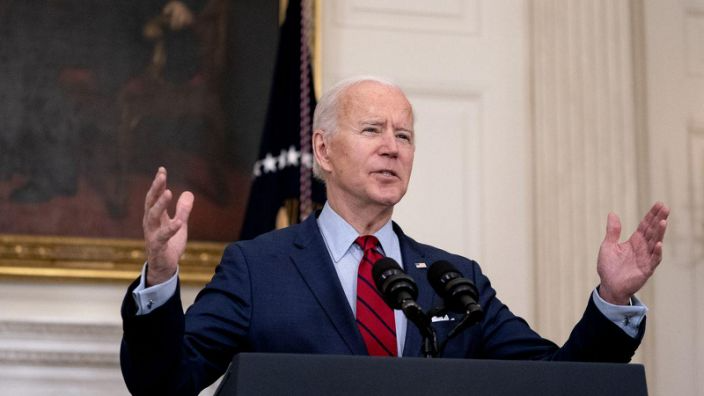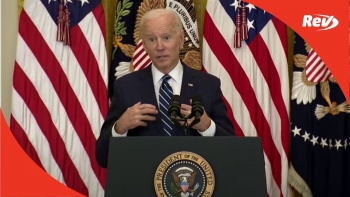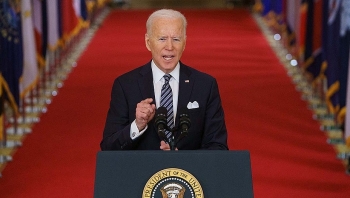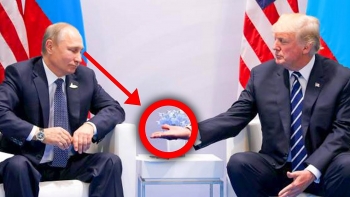What is Senate Filibuster: Meaning, How It Works, Biden’s Hints at Elimination
 |
| Democrats are making efforts to end the filibuster in the US Senate. If successful, it'll be an important move supported by good-government advocates. |
What does Senate Filibuster mean?
According to the Senate website -- which has its own glossary -- a filibuster is this: "Informal term for any attempt to block or delay Senate action on a bill or other matter by debating it at length, by offering numerous procedural motions, or by any other delaying or obstructive actions.”, CNN said.
These days, it's shorthand for anytime senators demand a supermajority to cut off debate and move to an actual vote on just about anything.
What would ending the filibuster do?
When people talk about ending the filibuster, what they really mean is reinterpreting Senate rules around cloture so that legislation could pass by a simple majority instead of being held up by a minority.
What is the difference between filibuster and cloture?
It's a funny spelling for the idea of closure, or limiting debate on something. If all senators don't agree to move to a vote on something -- a bill, a nomination, almost anything -- supporters must "invoke cloture."
Here's the Senate glossary definition: "The only procedure by which the Senate can vote to place a time limit on consideration of a bill or other matter, and thereby overcome a filibuster. Under the cloture rule (that's Rule XXII), the Senate may limit consideration of a pending matter to 30 additional hours, but only by vote of three-fifths of the full Senate, normally 60 votes.”
Read More: Biden's first press conference: Talks immigration, filibuster, China, vaccination goal
Why are the filibuster and cloture built into Senate rules?
Brookings fellow Molly Reynolds wrote that a provision allowing for a simple majority to force votes like the one utilized in the House of Representatives was removed on the advice of then-Vice President Aaron BurrBurr's advice to simplify the rules, not to create a supermajority test for all legislation.
Filibusters came into common use around the Civil War, causing headaches and slowing things down.
Cloture was adopted around World War I as a check on filibusters when a few senators held up efforts by President Woodrow Wilson during the war in Europe.
 |
| US President Joe BIden makes the first press conference this Thursday and he mentioned to eliminate the filibuster. |
How does filibuster work?
The Democrats’ slim majority in the U.S. Senate, a 50-50 split, has reopened discussion about that most-hated, also-loved and often confusing instrument of American power: the filibuster.
PBS NewsHour producer Kate Grumke noticed filibuster questions suddenly coming to her phone, from friends and family, including her mom, Theresa. We decided we would ask who else had questions, turning to Twitter with an open invitation.
Within minutes, we had an avalanche.
As Congress kicks off the new session in earnest, we decided to take on the most-asked questions here, in a kind of filibuster primer, with some extra nerdy moments.
Here is how the filibuster works now, in five steps:
1. Any senator can launch a filibuster.
2. Senators need to give notice they intend to do this. Usually, they first give their party leadership a heads up. Then the most frequent formal step is simple: The senator stands and says “I object” when other senators try to move forward on the legislation.
3. That senator can ask to speak but does not have to speak, about their reasons for blocking.
4. To end the filibuster, the full Senate must trigger a different super-weapon: “cloture.” Cloture closes debate, thus ending the filibuster. This is the 60-vote part. To get cloture, current Senate rules require a three-fifths vote of the Senate. (Which, with 100 senators currently, is 60, Nancy.)
5. If cloture passes, it dictates a maximum of 30 hours of debate and no more. Then there will be a vote on the actual measure the filibuster is seeking to block. If cloture does not pass, the bill remains in filibuster limbo as the Senate moves on to other business.
Biden hints at eliminating Senate filibuster
Biden said during a formal press conference, the first of his presidency, that the filibuster is “being abused in a gigantic way,” pointing to a steep increase in cloture votes, in which 60 senators must vote to overcome an individual senator’s effort to block legislation.
Biden said he “strongly” supports a talking filibuster, in which senators would be required to remain on the floor and speak in order to filibuster, but said the chamber should go “beyond” that “if we have to, if there's complete lockdown and chaos as a consequence of the filibuster.”
The filibuster threatens to stymie Biden and Democrats’ big plans on everything from gun control to election reform to immigration unless they can get 10 Republican votes – an unlikely prospect – and Schumer has not ruled out pushing to scrap it.
“It used to be you had to stand there and talk and talk and talk until you collapsed,” Biden said of the talking filibuster, which was eliminated in 1971, but which moderate Democrats like Sen. Joe Manchin (D-W.Va.) have signaled support for reviving.
Biden noted that people “got tired of talking and tired of collapsing,” when there was a talking filibuster, allowing the Senate to “break the filibuster, get a quorum and vote.”
Read more: Transcript of Biden First Press Conference March 25
Exactly what legislation can pass with 51 and what must have 60?
Nearly all legislation in the Senate now faces the 60-vote hurdle.
Some noncontroversial legislation can pass without it, by “unanimous consent.” But that requires every senator to agree and is well above the 60-vote hurdle.
There is one way to pass major legislation with just a majority vote and it involves another arcane tool: budget reconciliation. Here’s a more full explanation of this procedural monster. What’s important is that reconciliation can only be used for bills that impact the federal budget and it can only be used once a year. So it is limited.
Do Democrats have enough support to end the filibuster?
Not yet. While top Democrats like Sen. Dick Durbin of Illinois are behind the effort and progressives like Sen. Elizabeth Warren of Massachusetts have been pushing it for years, moderates like Sen. Joe Manchin of West Virginia are not. Because Democrats have only 50 votes right now, every one of them needs to be on board to change the Senate rules -- and they could be changed back in the future.
Would throwing mashed potatoes at each other be more effective and cleaner than a filibuster?
Unlikely to be more effective. The Senate chamber is 9,040 square feet in area. It would take giant vats of mashed potatoes to impact that space. However, potatoes could be used strategically to unite or divide delegations from, say, Maine and Idaho.
It would certainly be messier. Needless to say, mashed potatoes are delicious and should not be wasted.
 Transcript of Biden First Press Conference March 25 Transcript of Biden First Press Conference March 25 Read Full Transcript of President Joe Biden's First Press Conference on Thursday (March 25). He talks about immigration, filibuster, China, vaccination goal and More. |
 Biden First Press Conference: Foreign policy and Immigration Biden First Press Conference: Foreign policy and Immigration In his first formal news conference Thursday, President Joe Biden also talk about Immigration and Foreign policy including China, Russia, North Kokea, Afghanistan. |
 Biden's first press conference: Talks immigration, filibuster, China, vaccination goal Biden's first press conference: Talks immigration, filibuster, China, vaccination goal President Biden will be giving his first press conference as president on Thursday, March 25, at 1:15 p.m. ET. How and Where to Watch, TV ... |
 Facts About Video that Leader Kim Jong Un Call President Joe Biden as 'a Thug' Facts About Video that Leader Kim Jong Un Call President Joe Biden as 'a Thug' The video clip of North Korean leader Kim Jong Un giving a speech in Korean has been widely circulated on social media. The footage comes ... |
 Seven Times World Leaders’ Awkward Moments Captured By Cameras Seven Times World Leaders’ Awkward Moments Captured By Cameras Even world leaders may have some awkward moments unfortunately captured by cameras. Here are seven leaders with their unexpected minutes including Biden's tumbles. |























